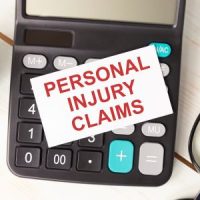Recovery For A Fractured Femur

The femur, or thigh bone, extends from the hip all the way to the knee and is both the longest and strongest bone in the human body. While this means that the femur is far less likely to fracture than other more fragile bones, such as the clavicle, it is not impervious to injury. Treating a fractured femur can be complicated, time-consuming, and expensive, which is why it’s so important for accident victims to seek compensation from the at-fault parties who cause these kinds of injuries.
Types of Femur Fractures
Femur fractures are classified based on a few different factors, including:
- Whether the break is located on the distal, middle, or proximal portion of the femoral shaft;
- The fracture’s pattern, or in which direction the break occurred; and
- Whether the skin and muscle at the site of the injury were torn by the broken bone.
Based on these factors, a broken femur will usually fall under one of the following categories:
- Transverse fractures, which occur when the bone breaks in a straight horizontal line;
- Oblique fractures, which occur when the bone breaks at an angle;
- Spiral fractures, which occur when a twisting force causes the break to encircle the femoral shaft (like the stripes on a candy cane);
- Comminuted fractures, in which the bone breaks into three or more pieces; and
- Open fractures, which occur when the bone breaks in such a way that a fragment actually pierces the skin, or the wound penetrates to the femur.
It is not uncommon, especially following a catastrophic accident, for a person to sustain more than one type of broken bone. A femur could, for instance, break into multiple pieces, one of which could also pierce the skin.
Symptoms, Diagnosis, and Treatment
Because the femur is so hard, it usually takes a significant amount of force before it will fracture. As a result, injured parties are rarely left wondering if they suffered a broken bone, but can expect to experience:
- Bony pieces pushing through the skin;
- Deformity of the thigh, such as a twisting, shortening, or unusual angle of the leg;
- Breaks in the skin;
- Significant bruising;
- A loss of sensation or movement in the leg; and
- Severe pain.
When an accident victim experiences these types of symptoms, he or she should seek medical attention immediately, where a physician will conduct a thorough physical examination, as well as a series of imaging tests, like x-rays and CT and MRI scans. The latter will determine the exact location and pattern of the fracture, which will also dictate how it is treated. Possible treatment could include realigning the broken bones, immobilization through use of a split or cast, and surgical use of fixation devices to stabilize the bone, all of which can be costly.
Contact Us for a Free Consultation
If you or a loved one suffered a broken femur in a car crash or other traumatic accident, you could be entitled to monetary compensation for your financial losses. To learn more, please call 954-566-9919 and set up a meeting with one of the dedicated Florida personal injury lawyers at Boone & Davis today.
Sources:
ncbi.nlm.nih.gov/books/NBK532982/
orthoinfo.aaos.org/en/diseases–conditions/femur-shaft-fractures-broken-thighbone/
